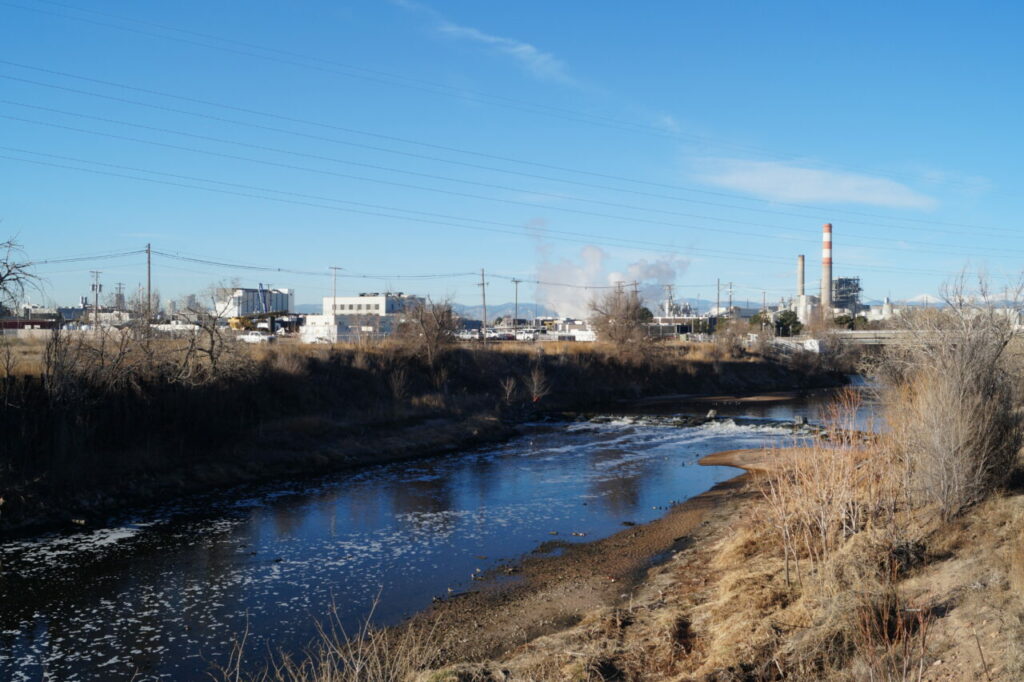By Trish Zornio

Summer is around the corner, and Denver residents are itching to get outside. But before you jump into one of the city’s lakes or streams, you should know there’s still a ban on swimming.
According to the Denver Department of Public Health and Environment (DDPHE), city ordinances prohibit swimming in streams and lakes in the city and county of Denver. Wading, boating and fishing are allowed, but with warnings for all recreators to avoid water contact if you have open cuts or sores, and wash or sanitize immediately after water contact. It is also recommended to avoid being in waterways for 72 hours after storms and to avoid algae blooms.
As for the South Platte River, recreation is not encouraged by DDPHE. In addition to frequently elevated E. coli levels, which can make people sick, industrial runoff in the water can be higher due to the location. According to the Colorado Department of Public Health and Environment (CDPHE), this includes elevated levels of arsenic running from the outlet of Chatfield Reservoir to the Burlington Ditch diversion in Denver, and increased sulfate, cadmium and ammonia levels from Burlington Ditch to Big Dry Creek. There may also be hidden obstacles such as concrete and rebar, although DDPHE notes these can be found in most urban streams and lakes.
Knowing what residents can do safely in public waterways can be tricky business, especially with so many waterfront parks being built. Executive Director of Colorado Watershed Assembly Casey Davenhill, who has spent decades helping residents enjoy and clean up local waterways, noted it’s a delicate balance for city officials who want to promote river access while issuing public health warnings.
“It’s a challenge,” Davenhill said. “We want people to enjoy the river and not turn their backs on it. But we need them to know that there are certain precautions. It’s an urban river.”
For her part, Davenhill said she’d partake in many of Denver’s waters, albeit with the recommended precautions.
“I’d kayak, innertube, wade or look for mackerel invertebrates with kids, with washing hands after and bringing water to drink,” Davenhill said. “I’d also be mindful of my surroundings, choosing areas not right below a stormwater drain or near trash and debris, for example.”
“Confluence Park area,” she added, “the way it’s designed, encourages getting into the water. That’s a pretty safe area in my opinion. I’d put my own kids in there, but I’d wash them off after. But I wouldn’t swallow [water] or hold my head underwater.”
Denver waterways’ dangerous levels of E. coli result from decades of human and other animal activities, including permitted levels of treated discharge from wastewater treatment plants, dog poop, bird poop and leaky sewer or storm pipes. From June through October, rates of E. coli tend to surge as outdoor use increases. Levels reached as much as three times higher than state and federal standards during 2019 in parts of the South Platte River, according to CDPHE. State officials emphasized the current data for the river is still being analyzed as part of a five-year study.
In addition to minimizing current risk, there are steps recreators can take to help reduce E. coli and other water pollutants in the future. Beyond keeping bodily discharges such as pee, poop and blood out of the water, people can make sure that dog excrement and all trash stay out of watershed areas. By properly disposing of these items, residents ensure that less pollutants run into the waterways.
“Storm drains in school yards and parking lots,” Davenhill noted, “those go directly into the creeks that go into the river. Don’t dump anything in those drains. Pick up after yourself. Leave no trace. A lot of times people think those drains go to a treatment plant, but they don’t. The river is the treatment plant.”
DDPHE concurs, noting the city continues to spend copious amounts of time and money monitoring and cleaning sewer and drainage systems. And even though former Mayor Hancock’s 2013 vision of making Denver’s lakes and streams swimmable by 2020 was a miss, city officials insist the vision improved cleanliness and that they are still dedicated to the effort. It just takes time.
“E. coli can reside in sediment in streams, and once it enters a waterbody it is extremely difficult to remove,” DDPHE offered in a statement to The Denver North Star. “Because it lives in the streams, removing a source of E. coli does not translate to a reduction of E. coli levels in the stream. As a result, it is difficult to say if E. coli levels in the South Platte River will ever be below levels that are currently deemed safe for recreation. Nevertheless, the city is committed to doing everything we can to ensure the river is safe for recreation.”

Be the first to comment